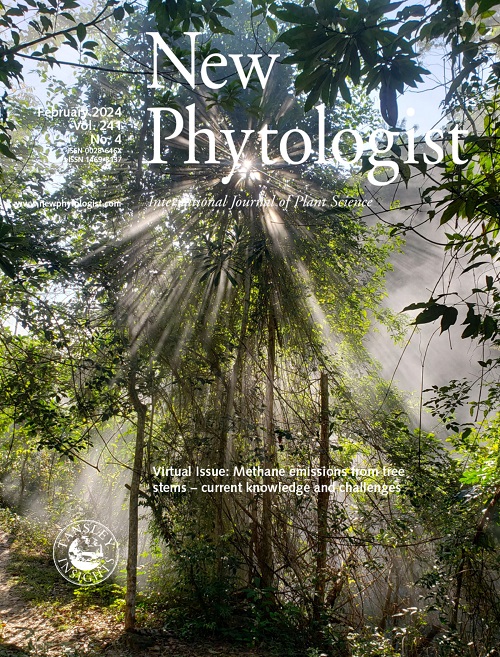基于Rab7/逆转录酶的内溶酶体运输是水稻稻瘟病宿主入侵的必要条件
IF 9.4
1区 生物学
Q1 Agricultural and Biological Sciences
引用次数: 3
摘要
分泌是植物病原体向寄主传递效应物以下调免疫、促进感染的基本过程。在这里,我们发现了一种有趣的膜运输和递送途径,它起源于米孔菌的液泡膜,并通向宿主界面和质膜。为了实现这种分泌/运输功能,MoRab7首先将反转录复合物招募到液泡膜上,从而能够识别一系列SNARE蛋白,包括MoSnc1。活细胞成像证实了逆转录复合物组分和MoSnc1向宿主界面或质膜方向和穿过宿主界面或质膜进行高度动态的囊泡运输,并随后与靶膜融合。有趣的是,基于MoRab7/Retromer/ mosnc1的内溶酶体级联的破坏会影响效应物的分泌和真菌的致病性。综上所述,我们发现了一条从真菌内溶酶体到M. oryzae-rice相互作用界面的非常规蛋白质和膜运输路线,并剖析了MoRab7/Retromer/MoSnc1分选机制在水稻稻瘟病菌生物营养和侵袭生长过程中效应物分泌的作用。本文章由计算机程序翻译,如有差异,请以英文原文为准。
Rab7/Retromer-based endolysosomal trafficking is essential for proper host invasion in rice blast
- Secretion is a fundamental process that plant pathogens utilize to deliver effectors into the host to downregulate immunity and promote infection.
- Here, we uncover a fascinating membrane trafficking and delivery route that originates from vacuolar membranes in Magnaporthe oryzae and conduits to the host interface and plasma membrane.
- To perform such secretory/trafficking function, MoRab7 first recruits the retromer complex to the vacuolar membrane, enabling recognition of a family of SNARE proteins, including MoSnc1. Live-cell imaging confirmed a highly dynamic vesicular trafficking of the retromer complex component(s) and MoSnc1 toward and across the host interface or plasma membrane, and subsequent fusion with target membranes. Interestingly, disruption of the MoRab7/Retromer/MoSnc1-based endolysosomal cascade affects effector secretion and fungal pathogenicity.
- Taken together, we discovered an unconventional protein and membrane trafficking route starting from the fungal endolysosomes to the M. oryzae–rice interaction interface and dissect the role of MoRab7/Retromer/MoSnc1 sorting machinery in effector secretion during biotrophy and invasive growth in rice blast fungus.
求助全文
通过发布文献求助,成功后即可免费获取论文全文。
去求助
来源期刊

New Phytologist
PLANT SCIENCES-
CiteScore
17.60
自引率
5.30%
发文量
728
审稿时长
1 months
期刊介绍:
New Phytologist is a leading publication that showcases exceptional and groundbreaking research in plant science and its practical applications. With a focus on five distinct sections - Physiology & Development, Environment, Interaction, Evolution, and Transformative Plant Biotechnology - the journal covers a wide array of topics ranging from cellular processes to the impact of global environmental changes. We encourage the use of interdisciplinary approaches, and our content is structured to reflect this. Our journal acknowledges the diverse techniques employed in plant science, including molecular and cell biology, functional genomics, modeling, and system-based approaches, across various subfields.
 求助内容:
求助内容: 应助结果提醒方式:
应助结果提醒方式:


